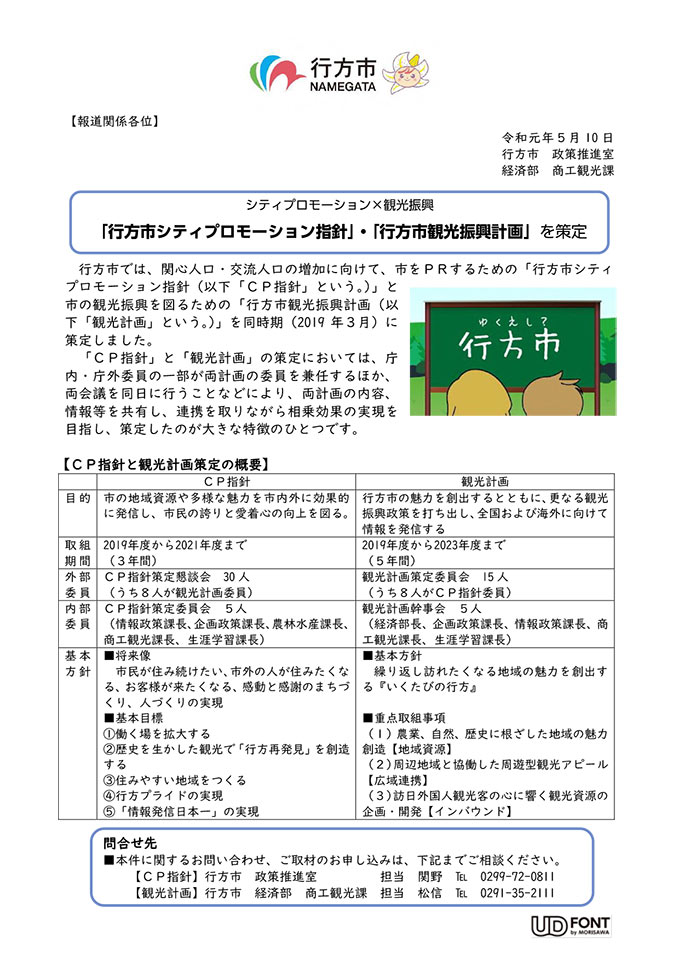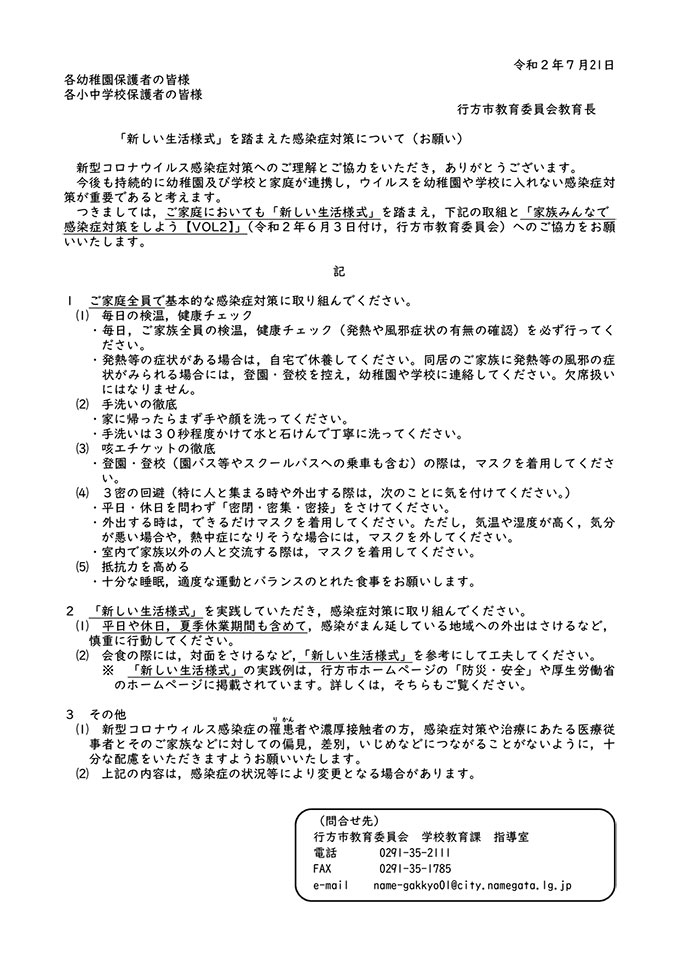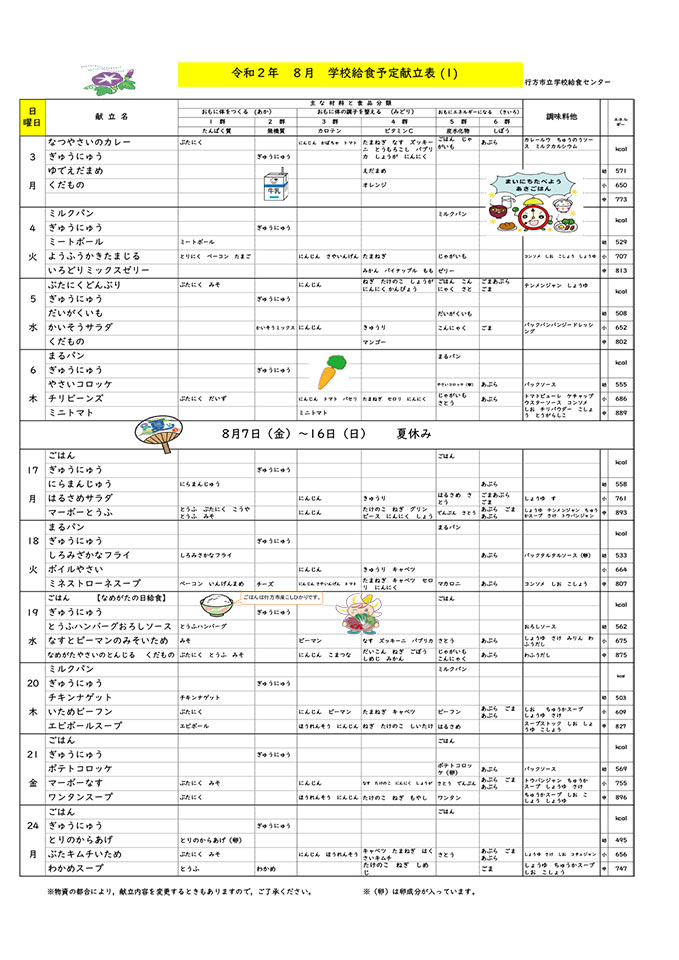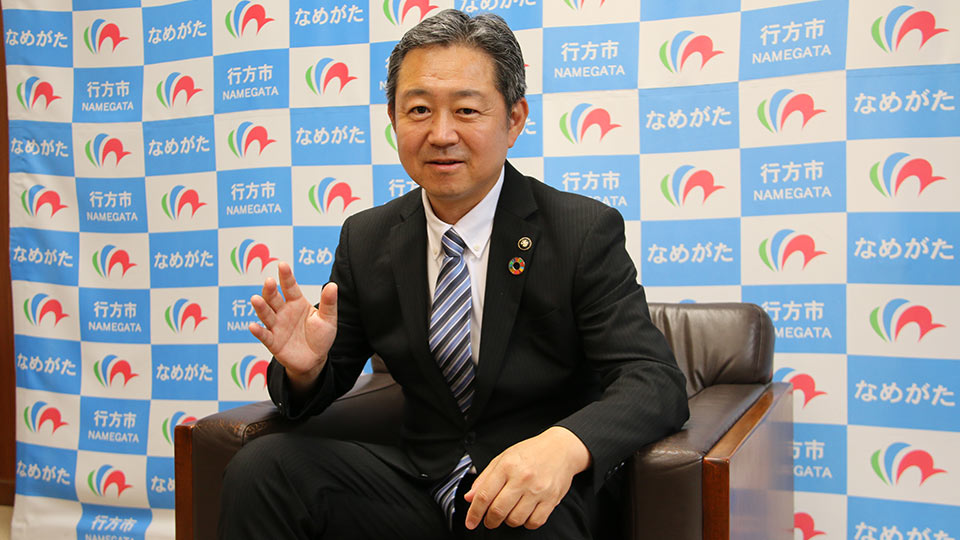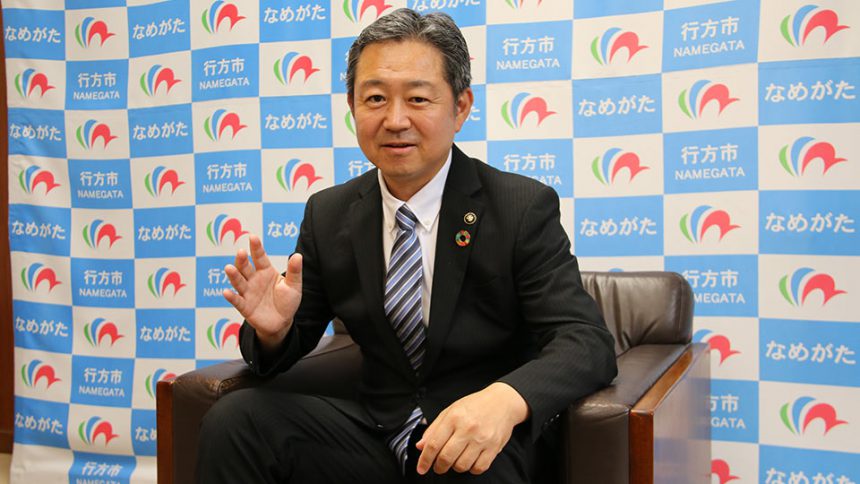
Mayor of Namegata City, Ibaraki Prefecture
Shuya Suzuki
Q. What kind of work do you do?
He is currently serving his second term as mayor of Namegata City, Ibaraki Prefecture.
The city's top-level plan, the Comprehensive Strategy, was formulated together with the citizens by the "Namegata Citizens' Committee of 100," consisting of approximately 100 citizens.
The "Number One in Japan for Information Dissemination Project," one of the five priority projects set out in the comprehensive strategy, aims to create a city where every citizen can take pride in disseminating information, and citizens, the city, and the government are working together to carry out various initiatives that will raise awareness of the region.
Q. The moment the font switch was turned on
With the goal of becoming "the number one information disseminator in Japan," and focusing on "being understood" rather than "communicating," we felt the need and effectiveness of "UD Font," which is easy for anyone to read and understand.
First, we introduced the "UD font" to our newsletter, and citizens praised it for being easy to read and understand.
In order to further promote sustainable urban development, we thought it would be effective for the government and education sectors to come together and utilize UD Font throughout the city.
By the way, my favorite font is "UD Digital Textbook Font."
Q. What Morisawa UD fonts do you use most often and in what situations do you use them?
Mincho font is often used in documents in the administrative and educational fields.
As the aging rate in our city exceeds 35%, we have changed as many of our information documents as possible, including tax and insurance notices, which have small, difficult-to-read letters, to UD fonts such as Mincho and Gothic.
In addition, UD fonts such as Mincho and Gothic fonts are actively used in various situations, such as for bills, budgets, financial statements, meeting materials, reports, and press releases in the government, and for learning materials, letters, and report cards in the educational field.
Q. What would you like to challenge in the future? (Future vision)
In order to promote sustainable urban development, our city aims to run its administration in accordance with the principles of the SDGs.
In June, we distributed plastic-free paper clear files to junior high school students to raise awareness of the 17 SDGs: "12. Responsible consumption and production," "13. Take concrete action to combat climate change," and "14. Protect the richness of the oceans and oceans."
By combining and using "UD Fonts" in lessons, we hope to raise awareness of "3. Good health and well-being for all," "4. Quality education for all," "8. Decent work and economic growth," "10. Eliminating inequalities between people and countries," and "11. Sustainable cities and towns."
Q. What do you expect from Morisawa's UD fonts in the future?
Our city uses UD fonts in an integrated manner in the administrative and educational fields, so many citizens, from children to the elderly, are familiar with UD fonts.
In addition, our city is home to Namegata Area Television, the third disaster-response terrestrial digital general broadcasting station in the country and the first in the Kanto region, and the program uses UD font.
In recent years, there have been many cases of abnormal weather, and the opportunities to communicate disaster and emergency information are increasing, so I would like to see more typefaces available, such as typefaces that allow users to quickly visualize the information they want to convey and that are easy to read.
Some of the materials distributed in Namegata City using UD fonts
